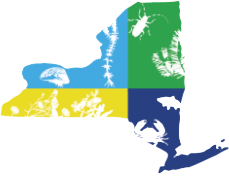Aquatic Invasions
Biocontrol Science and Technology
Biological Control
The scale and parasitoid community on native hemlocks in Japan
Biological Invasions
Deep rooting and global change facilitate spread of invasive grass
Severe and rapid population declines in exotic birds
Ecological Applications
Inferring invasive species abundance using removal data from management actions
Ecology
Parasites alter freshwater communities in mesocosms by modifying invasive crayfish behavior
Forest Ecology and Management
Impacts of white-tailed deer on regional patterns of forest tree recruitment
Functional Ecology
Soil-mediated eco-evolutionary feedbacks in the invasive plant Alliaria petiolata
Nectar chemistry modulates the impact of an invasive plant on native pollinators
Invasive Plant Science and Management
Risk Assessments for Invasive Plants: A Midwestern U.S. Comparison
Journal of Plant Ecology
Management of Biological Invasions
Volume and contents of residual water in recreational watercraft ballast systems
Veliger presence in residual water – assessing this pathway risk for Minnesota watercraft
Oikos
Extended leaf phenology may drive plant invasion through direct and apparent competition
PNAS
Predicting the spread of marine species introduced by global shipping
Restoration Ecology
Prestoration: using species in restoration that will persist now and into the future
Ecological restoration success: a policy analysis understanding

